-
Teeming with wondrous natural hot springs, dramatic coastal landscapes, and outstanding sustainability practices, it's easy to see why so many visitors to Japan tack on a night or more in Kinosaki Onsen and the surrounding areas within Toyooka City.
What exactly is the blueprint for Toyooka City's incredible variety of natural beauty and heritage?
The recipe for success can be traced back to approximately 20 million years ago, when the Japanese Archipelago separated from the Asian continent, forming the unique landscapes shaping the San'in Kaigan UNESCO Global Geopark.
-
What is the San'in Kaigan UNESCO Global Geopark?
-
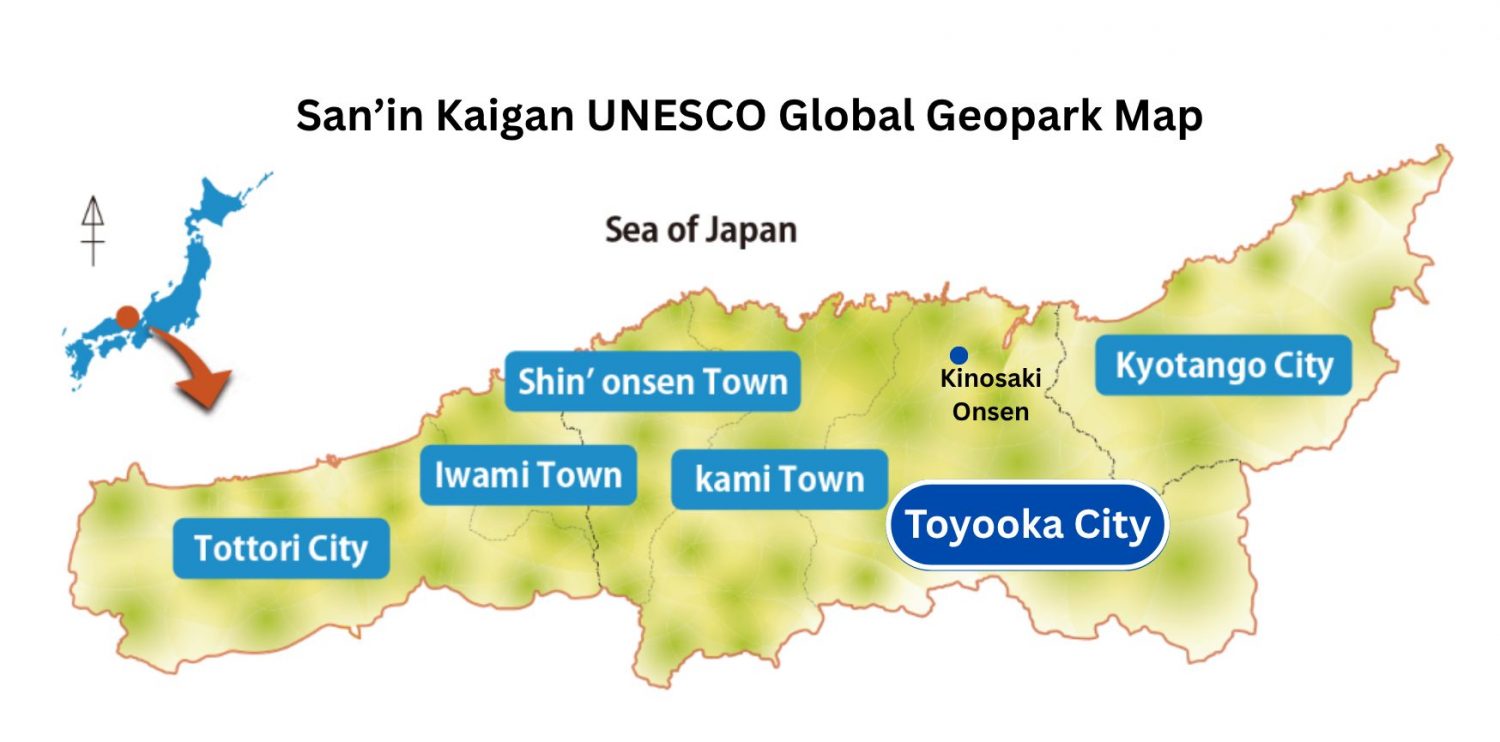
First of all, what exactly is a global geopark, and what do they have to do with UNESCO (United Nations Educational, Scientific and Cultural Organization)?
According to unesco.org, “UNESCO Global Geoparks (UGGp) are single, unified geographical areas where sites and landscapes of international geological significance are managed with a holistic concept of protection, education and sustainable development.”
It just so happens that Toyooka City and Kinosaki Onsen call one of these astounding geoparks home - the San’in Kaigan UNESCO Global Geopark!
An impressive list of sightseeing spots in Toyooka City cradle a wealth of this geopark’s geological heritage, ranging from mighty volcanic activity to one of the world’s most ground-breaking discoveries.
Experience the San’in Kaigan UNESCO Global Geopark at these hidden gems in Toyooka City:
Kinosaki Onsen - Hachigoro Toshima Wetlands
-

Oriental White Storks are an endangered species with close ties to Kinosaki Onsen.
Named after the wild Oriental White Stork from mainland China called “Hachigoro” that likes to call this wetland home, the Hachigoro Toshima Wetlands have been home to a stork family since 2008.
This wetland is a 20-minute walk from Kinosaki Onsen Station, or 5 minutes by rental bicycle.
Not only is the Hachigoro Toshima Wetlands part of the San’in Kaigan UNESCO Global Geopark, but this natural treasure was also designated as a wetland of international importance by the Ramsar Convention for its biodiversity.
Observe the storks in their natural habitat, coexisting peacefully amongst humans and fellow organisms that call these wetlands home.
Takeno Beach - Nekozaki Peninsula
-
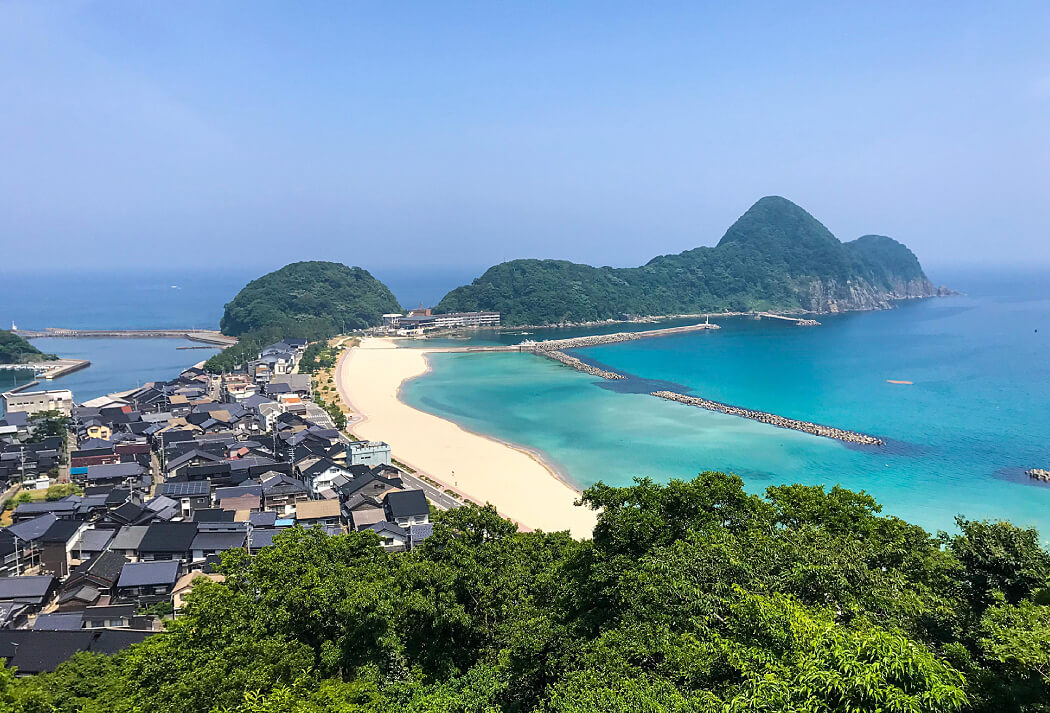
Takeno Beach is a peaceful sandbar located one train stop from Kinosaki Onsen Station.
Said to resemble a sleeping baby from the side and a crouching cat from above, Nekozaki Peninsula graces Takeno Beach not only with natural art, but also with one of the best hiking areas near Kinosaki Onsen.
This majestic peninsula was formed gradually during the creation of the Sea of Japan, and the slow passage of time is evident if visitors trek across the rugged coastline just to the left of the peninsula’s entrance.
Fossilized footprints of deer and elephants from the Asian continent, potholes, and a petrified tree are easy to spot during a walk across the rocky seaside.
Venturing into the peninsula’s hiking path reveals a lush forest thriving atop volcanic rock from eruptions over 20 million years ago.
Visitors interested in an in-depth tour of the peninsula can book a guided tour with a certified geopark guide!
Kirihama Beach - Hasakari Rock
-
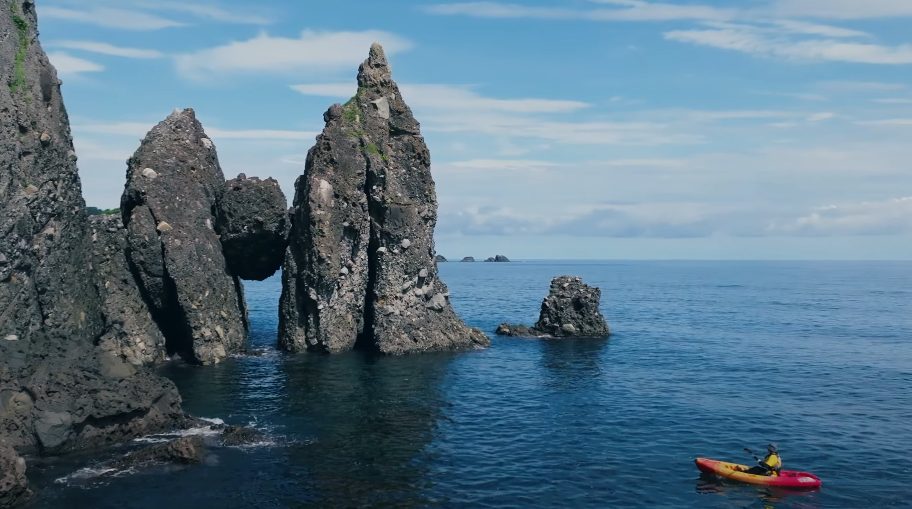
A hidden paradise along the Sea of Japan coast, Kirihama beach is located near Takeno Station, 10 minutes away from Kinosaki Onsen Station.
Along with kayaking and paddling tours of the coast, Kirihama Beach is home to Hasakari Rock, a natural wonder steeped in local legend and geology.
An impressive natural formation with a diameter of 3~4 meters, Hasakari Rock remains wedged in between two stone slabs above the ocean waves.
Japanese dialects local to this region use the word "hasakari" to describe something "stuck" or "wedged between," resulting in Hasakari Rock's namesake.
While Hasakari Rock can be viewed from the roadside, geo kayaking tours can take adventurers right next to the jagged exterior of this natural wonder.
Hasakari Rock is also a popular object of prayer, with students and job hunters paying respects to the unwavering rock to avoid failure (or "falling down" in Japanese).
Coastal Kinosaki - Dragon Palace
-
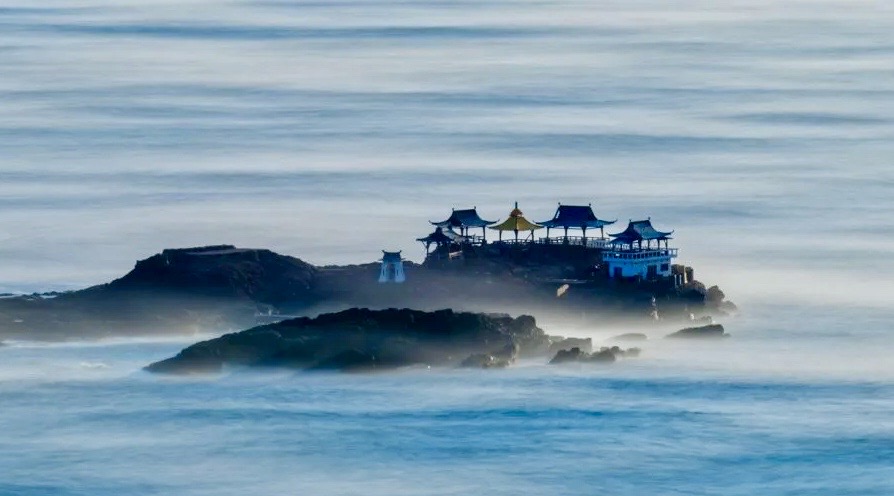
Just 10 minutes by bicycle from central Kinosaki Onsen lies the dramatic, tranquil coastline of Hiyoriyama, also known as Coastal Kinosaki.
Like Takeno Beach to the west, Coastal Kinosaki’s curious geo formations were formed during the birth of the Sea of Japan, when what is now the Japanese Archipelago began its migration away from the Asian continent.
One especially interesting remnant of this ancient move is the Dragon Palace.
Located on the uninhabited Nochigashima Island approximately 700 meters away from land, the Dragon Palace was used as a tea pavilion during the 1950s.
It has been said that the island resembles one of the settings for the Japanese folktale Urashima Tarō, the Dragon Palace.
While visitors can normally no longer enter the island, to see the Dragon Palace up close, visitors can book a guided cycling tour from central Kinosaki Onsen.
Genbudo Park
-
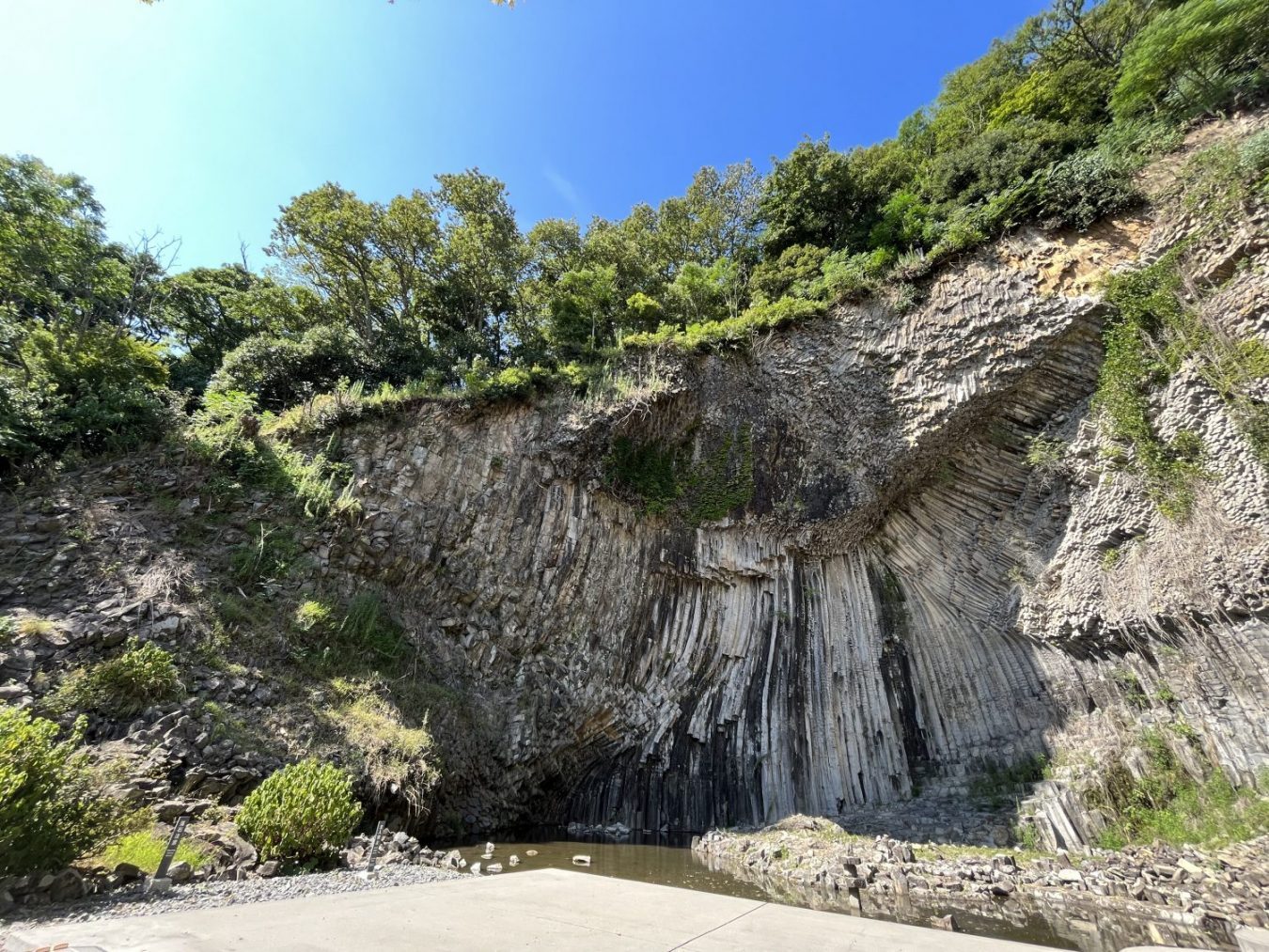
Home to the five beautiful basalt Genbudo Caves, Genbudo Park has 5 caves made of columnar joints that formed over 1.6 million years ago after the magma from a volcanic eruption cooled, contracted, and formed vertical cracks.
Genbudo Park was designated in 1931 as a National Natural Monument by the Japanese Government due to their significant role in the discovery of reverse magnetization, making it a perfect educational outdoor trip for visitors to the area.
In 1926, the Japanese geophysicist Motonori Matsuyama was the first to surmise that the Earth’s magnetic field had undergone reversals in the past, a theory made here when he discovered that the polar magnetic alignment of this basalt is the opposite of the Earth’s current magnetic polarity.
Evidence was found here, that sometime during the formation of these basalt rocks, the Earth had experienced a reverse of magnetic polarity.
To visit the caves, rent a bicycle from either SOZORO Tourist Information Center or the Kinosaki Onsen Ryokan Service Center in front of Kinosaki Onsen Station.
Kannabe Highlands - Mount Kannabe
-
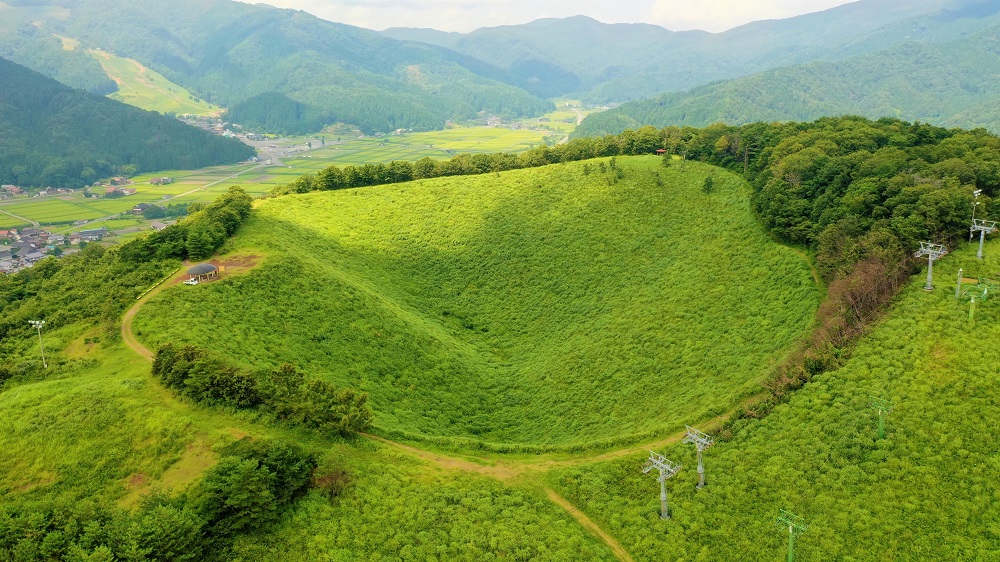
Mount Kannabe is one of the area’s many inactive volcanoes, last erupting 20,000-10,000 years ago.
Stroll up to the top via a gently winding path around the mountain or trek straight up the slanted mountainside for a more advanced hike.
Enjoy a panoramic view of the town below along the 750-meter walk around Mount Kannabe’s crater.
The mighty eruptions of the past now provide a natural bounty unique to the region—hardened magma flows and dramatic hilly landscapes provide stunning scenery all around.
No longer spewing lava, the mouth of Mount Kannabe now resembles a bowl of grass!
-
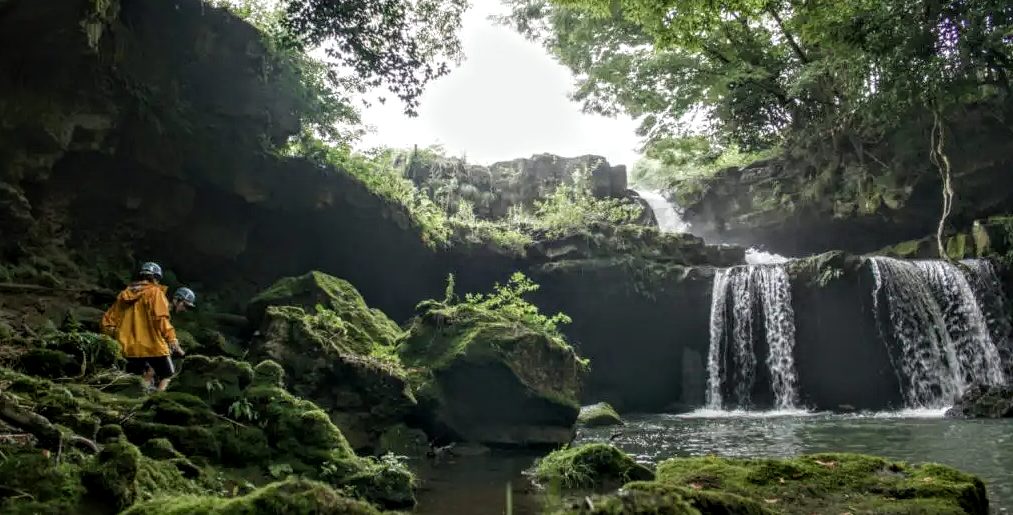
Another of Kannabe’s many outdoor activities is volcanic rock trekking.
With a local guide, retrace the footsteps from a time long forgotten while trekking on Mount Kannabe’s fossilized lava flow.
Choose from a 3km or 6km roundtrip course, and together with an English-speaking guide follow a trail to hidden waterfalls and other magnificent natural wonders.